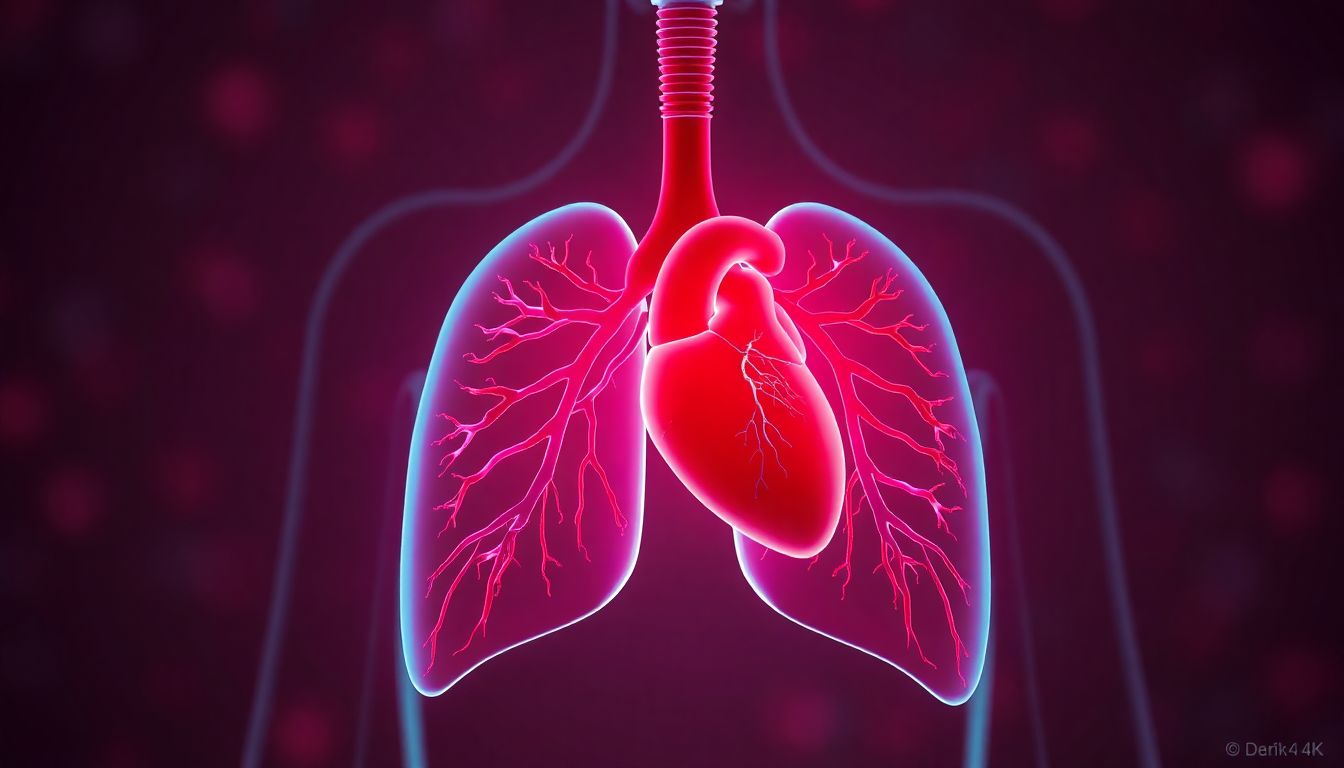When you think about lung health, you probably focus on breathing. But what happens after you take that breath? The real magic occurs in your bloodstream – the sophisticated delivery system that takes the oxygen from your lungs and transports it to every cell in your body.
Your circulatory system does much more than just carry oxygen. It’s the vital partnership between your heart, blood vessels, and lungs that determines your energy levels, exercise capacity, and overall vitality. When this system works efficiently, you feel energized and breathe easily. When it’s compromised, you may experience fatigue, breathlessness, and that frustrating feeling of never getting enough air.
The Oxygen Express: How Your Bloodstream Delivers Life
Think of your circulatory system as an elaborate subway system, with your lungs as the central station where passengers (oxygen molecules) board the trains (red blood cells). Here’s how this incredible process works:
- Station Entry: When you inhale, oxygen enters the 600 million tiny air sacs in your lungs called alveoli. These are so thin that oxygen can easily pass through their walls.
- Boarding the Train: Hemoglobin—the protein in your red blood cells—acts like magnetic trains waiting to pick up oxygen passengers. Each hemoglobin molecule can carry four oxygen molecules.
- Express Delivery: Your heart pumps this oxygen-rich blood through arteries to every tissue in your body—from your brain to your muscles to your organs.
- Return Trip: After delivering oxygen, the now deoxygenated blood returns through veins to your lungs to pick up a fresh load, and the cycle continues.
This entire process happens in seconds, and your body performs this miraculous exchange about 20,000 times per day without you even thinking about it.
When the Delivery System Fails: How Poor Circulation Affects Breathing
When your circulatory system isn’t functioning optimally, it creates a cascade of problems that directly impact your breathing and energy:
- The Traffic Jam Effect: Poor circulation means blood moves sluggishly. This creates backup pressure in the blood vessels around your lungs, making it harder for them to expand fully when you breathe.
- Oxygen Debt: With inefficient delivery, your muscles and tissues don’t get enough oxygen during activity. This creates “oxygen debt,” forcing you to breathe harder and faster to compensate.
- Carbon Dioxide Buildup: Your bloodstream also carries away waste carbon dioxide. Poor circulation means CO₂ builds up, triggering that panicky “I can’t catch my breath” feeling.
- Weakened Respiratory Muscles: Even your breathing muscles (diaphragm and intercostals) need good blood flow to work efficiently. Poor circulation weakens them, making each breath require more effort.
This explains why people with circulation issues often feel breathless even during simple activities like walking or climbing stairs. The problem isn’t always in the lungs themselves—it’s in the delivery system.
Now that you understand the connection, let’s explore how you can optimize this vital system.
5 Ways to Supercharge Your Circulation for Better Breathing
The good news is that you can significantly improve your circulation with simple, consistent habits. Here’s your action plan for optimizing oxygen delivery.
1. Move Your Body—The Pump Primer
Your muscles act as secondary pumps that help push blood back to your heart and lungs. The more you move, the better this system works.
- Best Exercises: Walking, swimming, cycling, and gentle rebounding. These activities use large muscle groups without overstraining your cardiovascular system.
- Simple Start: Aim for 20-30 minutes of moderate movement daily. Even breaking it into 10-minute sessions throughout the day makes a significant difference.
These activities complement the breathing exercises we discussed in Diaphragmatic Breathing: The #1 Exercise to Strengthen Your Lungs.
2. Support Your Blood with Circulation-Boosting Nutrients
Certain nutrients directly improve blood quality and vessel health:
- Iron-Rich Foods: Spinach, lentils, red meat, and pumpkin seeds support hemoglobin production.
- Nitrate-Rich Vegetables: Beets, leafy greens, and garlic help blood vessels relax and widen.
- Omega-3 Fatty Acids: Found in fatty fish, walnuts, and flaxseeds, they reduce inflammation in blood vessels.
- Vitamin C: Citrus fruits, bell peppers, and broccoli strengthen capillary walls.
These work beautifully with the anti-inflammatory foods highlighted in The Lungs’ Best Friends: Top 5 Anti-Inflammatory Foods.
3. Optimize Your Hydration
Your blood is about 90% water. Even mild dehydration makes blood thicker and harder to pump.
- Daily Goal: Aim for half your body weight in ounces of water daily (e.g., 150 lb person = 75 oz water).
- Pro Tip: Add a pinch of sea salt to your water to improve electrolyte balance and hydration absorption.
4. Practice Circulation-Enhancing Positions
Simple postural changes can immediately improve blood flow to your lungs and heart:
- Legs Up the Wall: Lie on your back with legs vertical against a wall for 5-10 minutes daily.
- Sleep Positioning: Elevate the head of your bed slightly to reduce pressure on your lungs and heart overnight.
- Avoid Prolonged Sitting: Stand up and move for 2-3 minutes every hour if you have a desk job.
5. Support Your Blood Vessel Health
Your blood vessels need to be flexible and clear to function optimally:
- Deep Breathing Exercises: The techniques in Pursed-Lip Breathing: How to Stop Shortness of Breath Instantly create pressure changes that massage and exercise your blood vessels.
- Contrast Hydrotherapy: Alternating warm and cool water in the shower helps train blood vessels to contract and expand efficiently.
- Antioxidant-Rich Foods: Berries, dark chocolate, and green tea protect blood vessels from oxidative damage.
Key Takeaways to Remember
- Your bloodstream is the delivery system that transports oxygen from lungs to tissues
- Poor circulation can cause breathlessness even with healthy lungs
- Movement acts as a secondary pump to support blood flow
- Hydration and specific nutrients directly improve blood quality and vessel health
- Simple positional changes can immediately improve circulation to your lungs
The Bottom Line: Your Bloodstream is Your Oxygen Delivery Team
Understanding the circulatory system’s role in breathing transforms how you approach lung health. It’s not just about getting air into your lungs—it’s about efficiently delivering that oxygen to where it’s needed most.
By supporting your circulation through movement, nutrition, and healthy habits, you’re ensuring that every breath you take actually reaches your cells. Your bloodstream is the unsung hero of respiratory health, working tirelessly to convert each inhalation into usable energy.
When you optimize this delivery system, you transform that frustrating breathlessness into effortless, energizing breaths that truly nourish your entire body.
Ready to Optimize Your Entire Respiratory System?
This article showed you how circulation impacts breathing—one essential component. Our Ultimate Guide to Clearing Mucus & Restoring Lung Health Naturally integrates this with all other body systems for comprehensive respiratory wellness.
Join thousands who have discovered the power of addressing all aspects of respiratory health.











